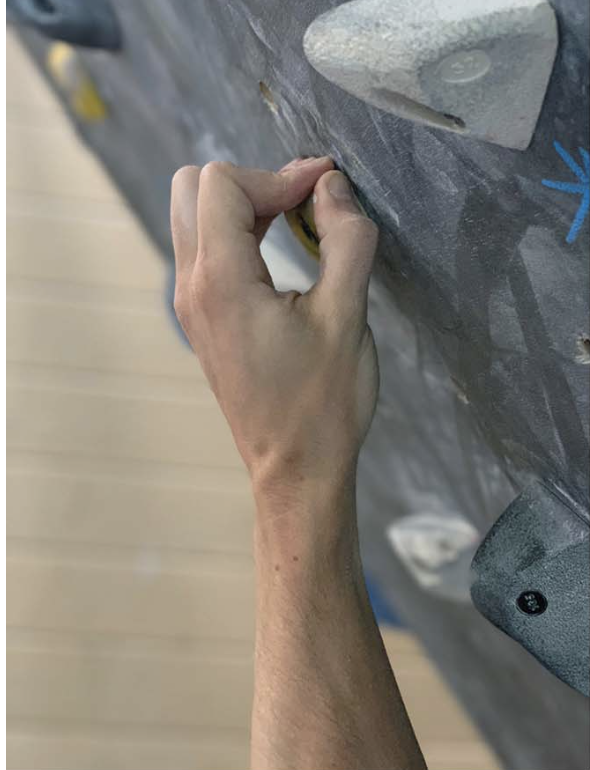In Rock Climbing Part 1, we learned that one of the most commonly injured body parts in climbing is the finger. 67% of rock climbers had experienced a finger injury during a three year review, and 40% of chronic climbing injuries are finger injuries. In Rock Climbing Part 2, we reviewed different climbing moves and the physical requirements for each move, with an image demonstrating the high forces placed on the finger during crimping. In this blog, we will review the literature to learn about the commonly injured finger flexor tendon pulley and the best management for full recovery from these injuries.
Anatomy1: The finger pulleys are fibrous tissues that hold the finger flexor tendons close to the phalanges (finger bones). There are 5 annular and 3 cruciate pulleys. Two of the annular pulleys, A2 and A4, insert directly into the bone over the proximal and middle phalanges and are the most important to prevent bowstringing of the tendons. The below image shows two views of the finger pulley system, with the black areas being the tendons.
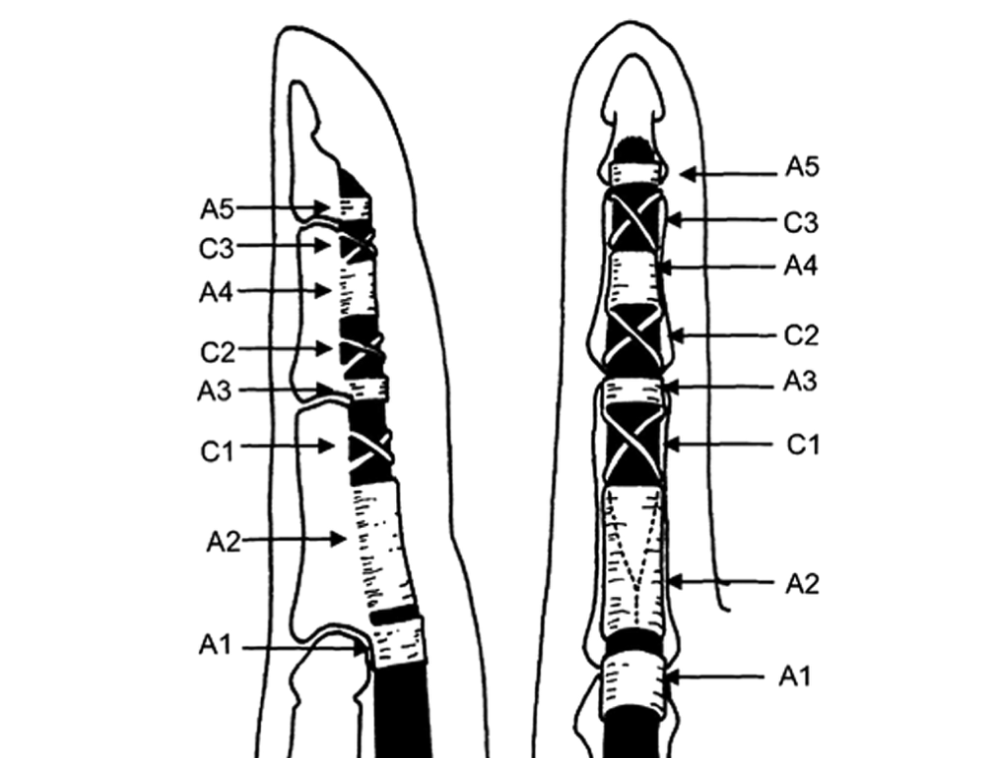
Injury2: Flexor tendon pulleys represent 33% of all injuries observed during climbing. The most commonly injured sites are the middle and the ring fingers, with the A2, then the A4 being the most commonly injured pulleys. The injury often occurs during a crimp grip and when the fingers are being loaded eccentrically (such as when a foot slips while crimping). There is often an audible pop, and sometimes (not always) acute pain and swelling, followed by a decrease in finger flexion strength.
Biomechanics (Zafonte et al, 2014): The finger pulley system is designed to hold the finger flexor tendons close to the bone, which decreases the moment arm and improves finger flexion (see below figure on the left). When the pulley is injured, the tendon is not held closely to the bone, thus increasing moment arm and decreasing finger flexion (see below figure on the right). This tendon excursion is called bowstringing.
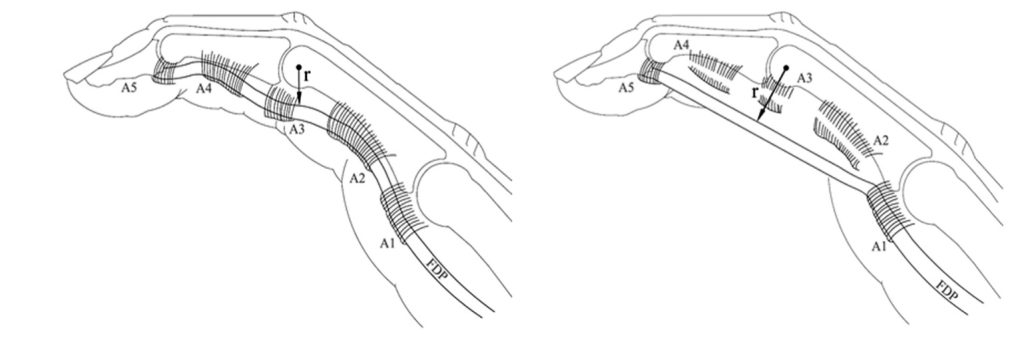
Grading and Treatment3: The below table was originally proposed by Schoffl and Schoffl and is frequently used to grade and treat finger pulley injuries.
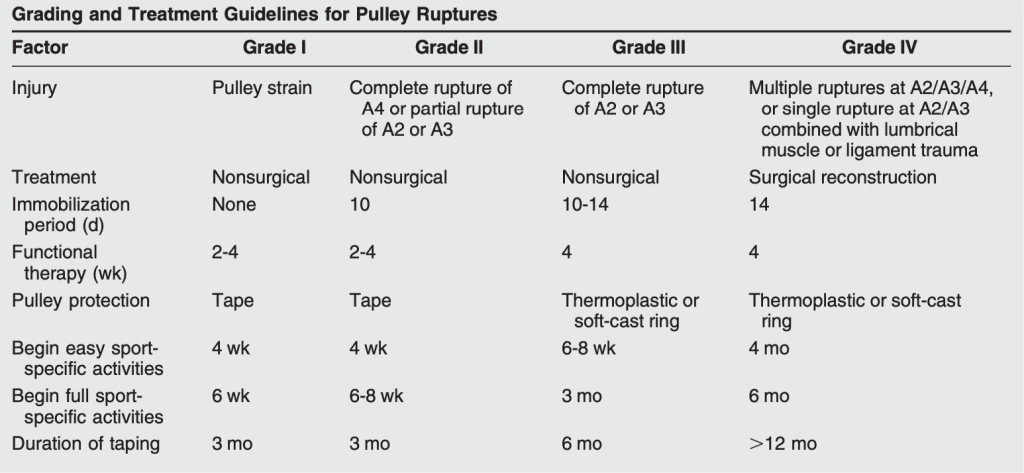
For most pulley injuries (Grades II-III), treatment should consist of immediate rest from climbing followed by progressive strengthening of the finger flexors utilizing H-taping or a pulley protection splint. Conservative treatment should also include soft tissue mobilization to improve remodeling of the healing tissue. Surgical repair is recommended for grade IV injuries that do not improve with conservative treatment. 4
The below images show H-taping and a pulley protection splint. Both methods have been shown to help approximate the flexor tendon to the bone during the recovery phase.
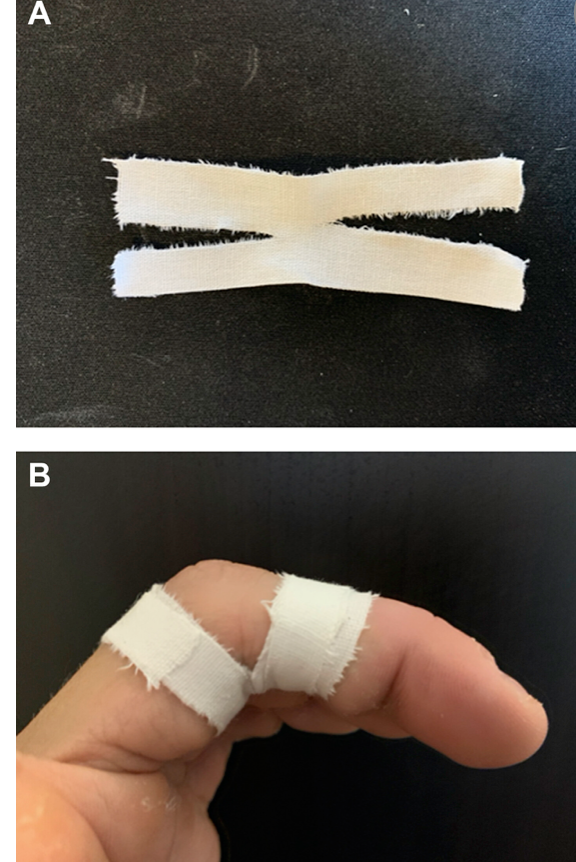
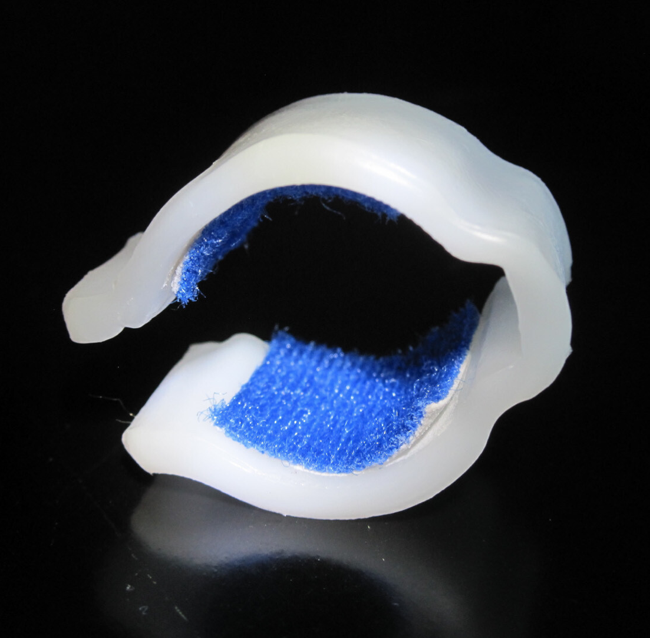
Outcomes: The good news is that prognosis is excellent both with conservative and surgical treatments. In a case study of 43 rock climbers who were treated with a pulley-protection splint for 2 months followed by taping with a 3-5 month climbing progression, 38 had regained their previous climbing level within 9 months of the injury.5
If you are experiencing a rock climbing – related injury, you may benefit from individualized physical therapy in South Boulder with Dr. Sarah Burkhardt.
or email sarah@seatosummitpt.com with any questions!
References:
- Zafonte B, Rendulic D, Szabo RM. Flexor pulley system: anatomy, injury, and management. J Hand Surg Am. 2014;39(12):2525-2533. doi:10.1016/j.jhsa.2014.06.005 ↩︎
- Artiaco S, Bosco F, Lusso A, Cioffi LL, Battiston B, Massè A. Flexor Tendon Pulley Injuries: A Systematic Review of the Literature and Current Treatment Options. J Hand Microsurg. 2022;15(4):247-252. Published 2022 Jun 28. doi:10.1055/s-0042-1749420 ↩︎
- Cole KP, Uhl RL, Rosenbaum AJ. Comprehensive Review of Rock Climbing Injuries. J Am Acad Orthop Surg. 2020;28(12):e501-e509. doi:10.5435/JAAOS-D-19-00575 ↩︎
- Miro PH, vanSonnenberg E, Sabb DM, Schöffl V. Finger Flexor Pulley Injuries in Rock Climbers. Wilderness Environ Med. 2021;32(2):247-258. doi:10.1016/j.wem.2021.01.011 ↩︎
- Schneeberger M, Schweizer A. Pulley Ruptures in Rock Climbers: Outcome of Conservative Treatment With the Pulley-Protection Splint-A Series of 47 Cases. Wilderness Environ Med. 2016;27(2):211-218. doi:10.1016/j.wem.2015.12.017 ↩︎

